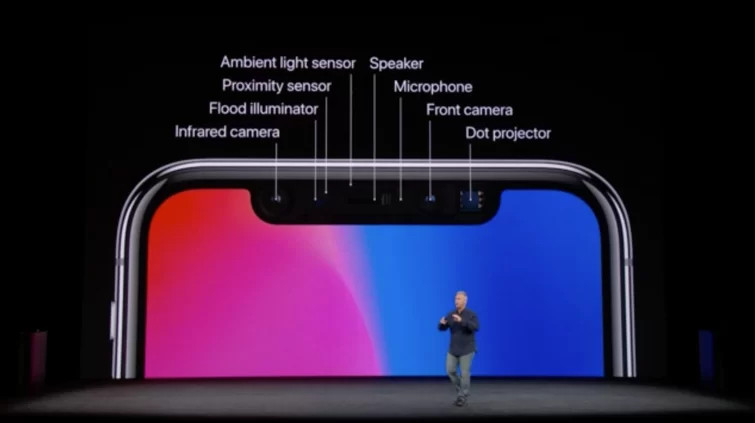Microsoft patents technology which could make iPhone X's notch smaller
3 min. read
Published on
Read our disclosure page to find out how can you help MSPoweruser sustain the editorial team Read more

As can be seen from the picture above, the iPhone X’s notch carries a lot of hardware, much of it concerned with Apple’s Face ID system, which includes generating 3D data from your face by projecting a Kinect-like dot pattern on your face and then reading the resulting distorted image back with an infrared camera.
Microsoft has now applied for a patent which would make the notch slightly smaller, by combining the front-facing camera and infra-red camera into a single sensor.
 The patent for a “HYBRID IMAGING SENSOR FOR STRUCTURED LIGHT OBJECT CAPTURE” claims the following innovations:
The patent for a “HYBRID IMAGING SENSOR FOR STRUCTURED LIGHT OBJECT CAPTURE” claims the following innovations:
In some disclosed embodiments, a system of three-dimensional imaging is configured with a structured light source, a hybrid imaging sensor, and a bandpass filter. The structured light source emits light in a structured illumination pattern. The emitted light is emitted with a peak infrared wavelength between about 750 nm and about 1000 nm.
The hybrid imaging sensor is configured with a plurality of domains. At least one of the domains includes at least one visible wavelength photoreceptor and at least one infrared wavelength photoreceptor. The visible wavelength photoreceptor detects ambient light in the visible wavelength range. The infrared wavelength photoreceptor detects infrared light in the infrared wavelength range, where the hybrid imaging sensor detects a portion of the emitted light as a reflected light. The bandpass filter passes light in the visible wavelength range and in the infrared wavelength range.
In some embodiments, the system of three-dimensional imaging is further configured with one or more processors in data communication with the hybrid imaging sensor and which are configured to execute stored computer-executable instructions for controlling the hybrid imaging sensor and/or related components of the system.
Disclosed embodiments also include methods for performing three-dimensional imaging with the disclosed systems. These methods include receiving incoming light with the imaging system, wherein the incoming light includes visible light, infrared ambient light, and infrared light reflected from the infrared illuminator. The methods also include filtering the incoming light to attenuate light at least between about 650 nm and about 750 nm and collecting visible image data regarding the visible light with at least one visible wavelength photoreceptor and infrared image data regarding the infrared light with at least one infrared wavelength photoreceptor concurrently.
The system would introduce an infrared filter which would allow infra-red sensors to co-exist in the same camera with visible light sensors. Microsoft notes besides saving space it would have additional advantages such as allowing visible light and structured light depth data to be combined more easily without issues of parallax due to the sensors being a slight distance away from each other.
While it is not know what Microsoft is planning to do with this patent, which was applied for in August 2016, there has been some rumours that Microsoft’s mythical Surface Phone would also include a depth sensor of some kind, suggesting we may see this technology show up there, or more likely as a Windows Hello sensor on Microsoft’s Surface laptop range.










User forum
0 messages